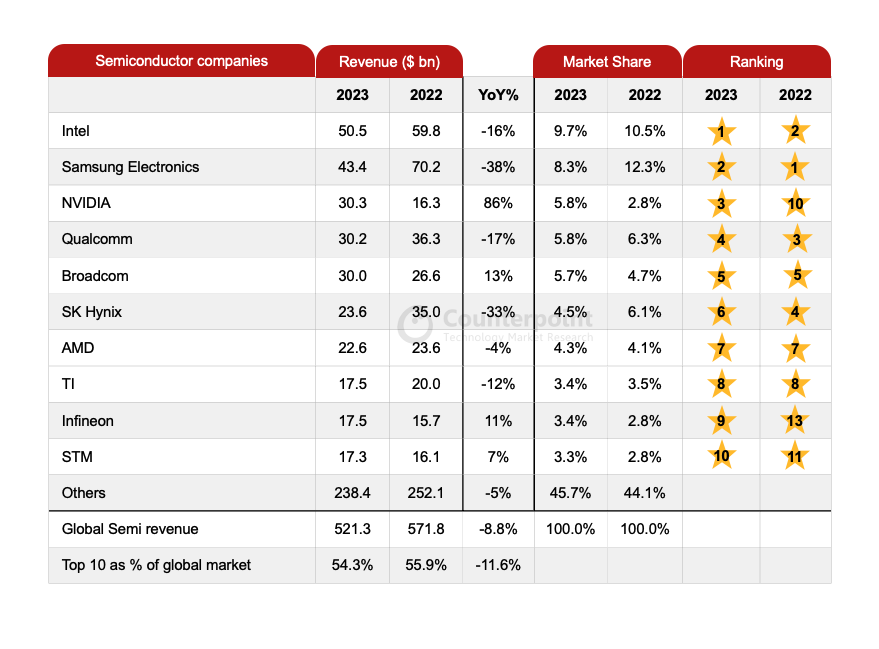As per the latest Counterpoint report, the global semiconductor industry experienced an 8.8% decline in revenue in 2023, primarily due to reduced spending in both consumer and enterprise sectors. However, the landscape saw significant changes, with Intel overtaking Samsung for the top spot, as Samsung battled downturns in its memory and smartphone businesses.
Artificial Intelligence (AI) emerged as a key driver of growth in the semiconductor industry, especially in the second half of the year. NVIDIA, a major player in AI technology, benefited significantly, marking an 86% increase in year-over-year revenue, which positioned them third in revenue rankings for the first time.
Counterpoint’s semiconductor revenue tracker indicates that only six out of the top 20 global semiconductor vendors reported growth in 2023. The memory sector was particularly hard hit, witnessing a 43% decrease in revenue year-over-year. This decline contributed to the top 20 vendors’ market share falling from 76% in 2022 to 71% in 2023.

Intel’s return to the lead in the semiconductor market came despite a 16% drop in its year-over-year revenue, attributed to declining shipments in PCs and servers. Samsung’s revenue fell by 38% due to challenges in the DRAM and NAND segments. Other major players in the memory market, SK hynix and Micron, also reported significant revenue decreases.
William Li, Senior Analyst at Counterpoint Research, points to AI as a primary growth driver for the semiconductor industry in 2024. He predicts a recovery in the memory sector due to a normalization of the oversupply situation and demand recovery. The automotive sector is also expected to contribute to market growth, as demonstrated by Infineon and STMicroelectronics in 2023.
With the semiconductor industry nearing the end of its inventory correction cycle and stable client demand, supply constraints are likely to be a key focus. TSMC, the world’s largest foundry player, maintains a positive outlook with plans for capacity expansion in 2024, anticipating strong demand throughout the year.
RELATED:
- NVIDIA RTX Remix open beta officially released offering ray tracing and DLSS in one click to supported games
- Intel Launches The Core i7-14790F and i5-14490F Processors for China
- Huawei’s Kirin 9006C Mystery: TSMC’s Role Unveiled Amid Global Semiconductor Challenges
- China’s Semiconductor industry surpasses expectations despite sanctions
- Unlock Savings: Discount on Every Giztop Product under the New Year Sale
- Lenovo Legion Y700 2023: Save $100 on this 8-inch gaming Android tablet
(Source)






